In November 2023 we ran a small foil competition to provide a bit of variety to club nights and to introduce beginners to the format of a typical fencing competition. All results have been recorded in a (thankfully free) copy of Fencing Time.
For those new to competing I’ve outlined the process behind the competition below as we tried to follow the format of a typical competition and so give members a taste of the real thing.
Poules
With most of the twelve entrants not having a BFA Foil ranking we relied on Shaun to rank the fencers so we could run two poules with a fair spread of fencers between them. Fencers are allocated to poules in a snake like fashion as shown below
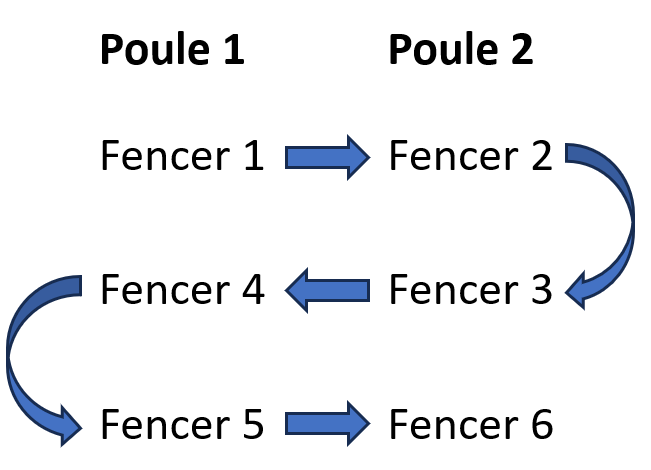
This should allow for a spread of experience in each poule. In the poule each fencer fights all of the other fencers in a bout lasting three minutes or until when one fencer gets five hits.
At a normal competition it is your job to listen out for when the poules are created and find out what piste your poule will run on. If your competition has referees then they will check off fencers against the poule sheet to make sure everyone is there but don’t expect them to send out search parties for you!
The order of matches will be printed on the poule sheet and the referee should shout something like ‘On the piste 1 and 2, Ryan and Mike, get ready 3 and 4 Jacob and Cameron’. It’s your job to listen out for the calls so you can be ready to fence at the right time. In all fencing matches the clock is stopped when the referee calls ‘halt’ and starts again when they call ‘Fence’, ‘Play’ or ‘Allez’ (depending on their personal preference). The results are then recorded in the poule sheet. Here is the completed poule sheet for the first poule after it had been transferred from the hand-written poule sheet to Fencing Time:
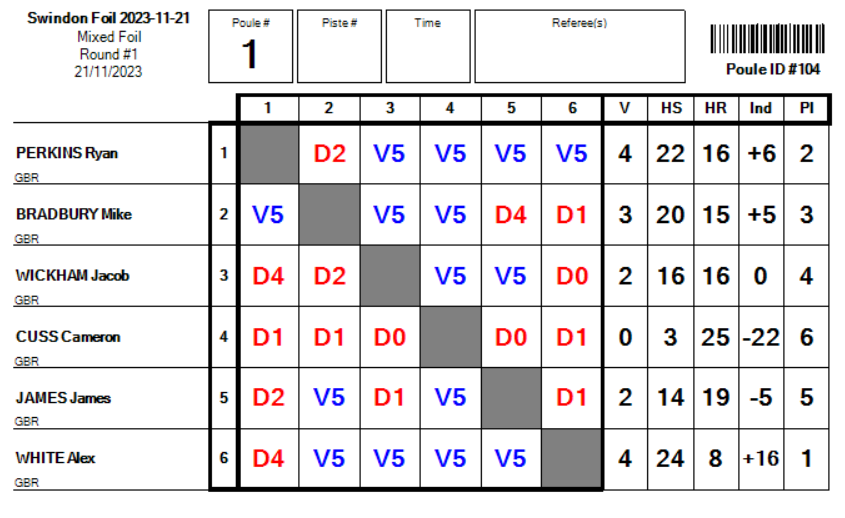
For a fencer’s result, read across, so Ryan lost to Mike scoring two hits in the process, then won his other four fights by reaching five hits. At the end of the poule the totals are completed:
- V – Total number of victories
- HS – Hits scored
- HR – Hits received
- Ind – Indicators = HS minus HR
- Pl – The ranking in the poule.
Alex won this poule as, although both he and Ryan had four victories, Alex’s indicator of +16 was better than Ryan’s. When fencing in competitions it is always worth remembering that indicators can make a big difference as to where you are placed in the seedings for the next phase of the tournament.
In a normal competition fencers will be asked to check the poule sheet at the end and then sign it to say they agree with it. Make sure you check it thoroughly as it is your chance to make sure that the referee wrote the results down correctly. It is easy to get the scores the worng way round and there’s a lot going on in a competition hall so don’t take it on trust.
For completeness here is the poule sheet for poule 2:
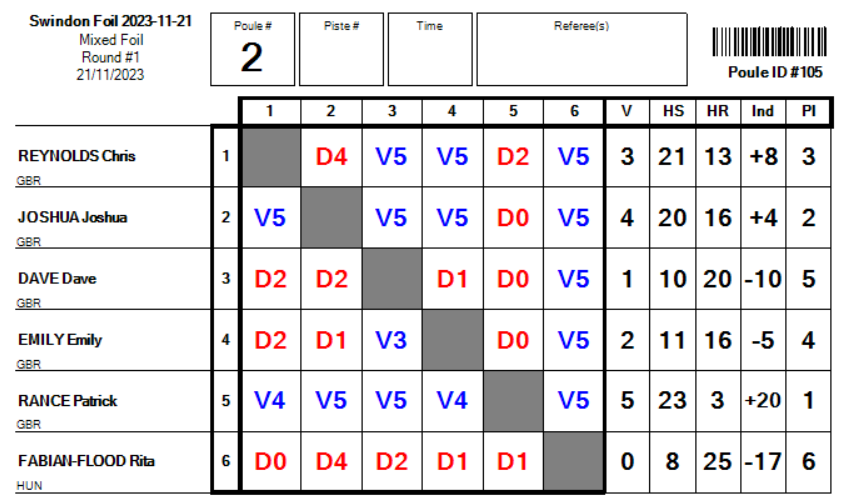
Seeding for the Direct Elimination
Now both poules are complete we move on to the knockout phase of the competetion usually known as the DE, short for Direct Elimination. The results from all the poules are combined to create a set of seedings. The seedings are based on ratio of victories in the poule and then any ties are broken by using indicators. Ratio of victories is used as it is possible for poules to have different numbers of fencers in and so going on straight number of wins would be unfair to those in smaller poules. This is the seeding for our competition:
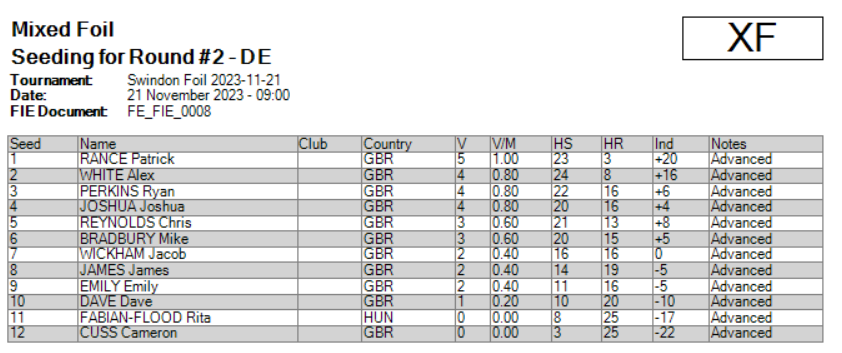
The new columns we see there are V/M for Victories divided by Matches (the ratio mentioned above) and the Notes column showing that everyone advanced. In a large competition it may be that only the top 32 or 64 are advanced to the DE. We had a tie with three fencers getting a ratio of 0.4, Jacob’s better indicators put him at the top of the three and James’ superior Hits Scored put him above Emily so you can see the value of every hit in the poule stage.
The DE phase will place the 1st seed against the last seed, the second seed against the second last seed and so on. As we don’t have enough fencers to complete a round of 16 then the top four seeds will get a bye as they would be facing seeds 13-16 who don’t exist. Assuming all matchs go to seeding then seeds one and two should meet in the final. This is the tableau after the seedings and before any DE matches take place, our top four seeds already marked up in the table of 8 thanks to their byes:
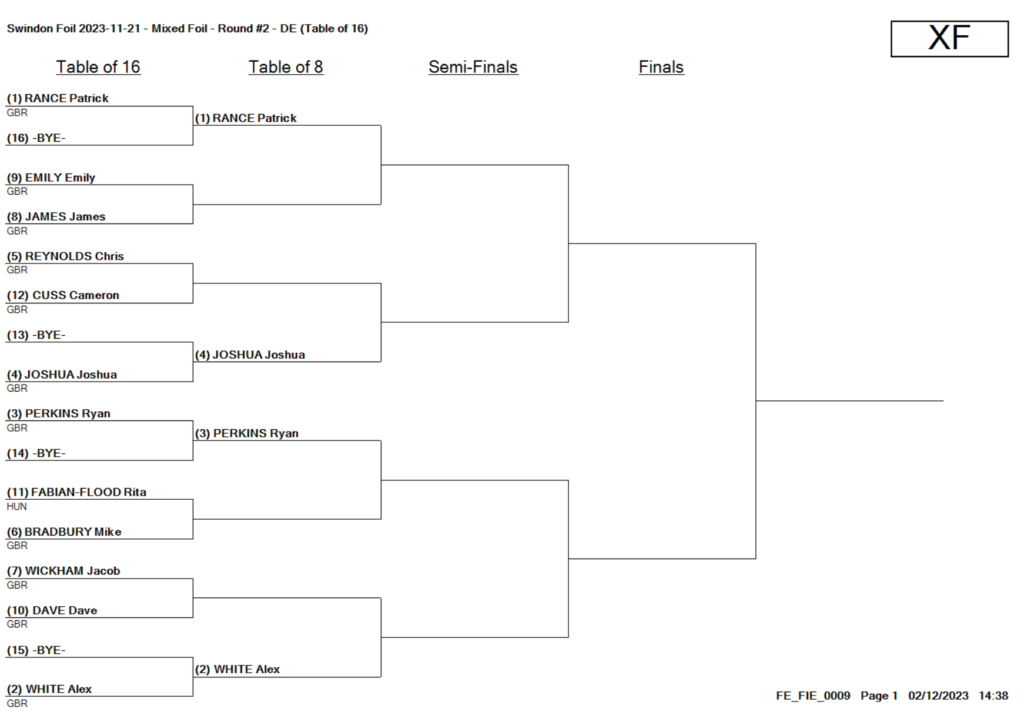
The Direct Elimination
In senior competitions DE matches are the first to 15 hits or whoever is leading after three periods of three minutes with a minute’s rest between periods. If a match is tied at the end of the nine minutes then one fencer is randomly given ‘priority’ and they fence for one more hit in a one minute session. If, at the end of the minute, neither fencer has scored then the winner is the fencer with ‘priority’.
Our little competition was unusual in that two of the fencers from the poules weren’t at the club for the DE and some fencers were present on DE night who weren’t there for the poules. As this was only a friendly competition these new fencers were added to the seedings for the DE. This would not normally happen in a genuine competition. After the removals and additions our tableau looks like this:
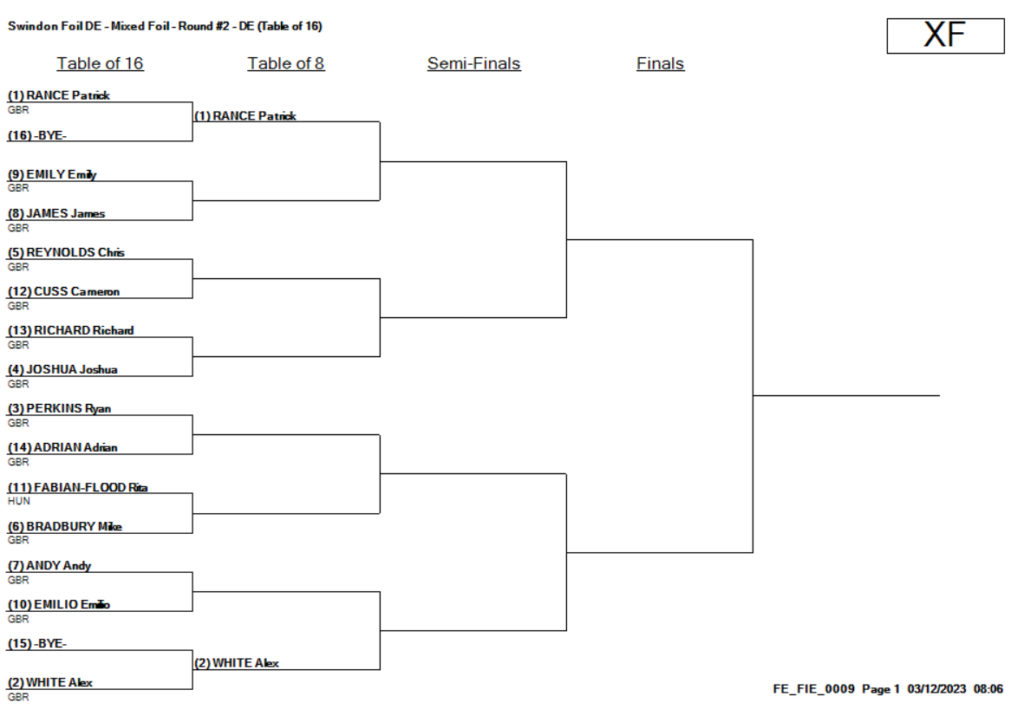
As we now have 14 fencers only the top two seeds get byes so Josh and Ryan now get a fight in the round of 16. As the various bouts take place the tableau fills out until we just have the final match to complete:
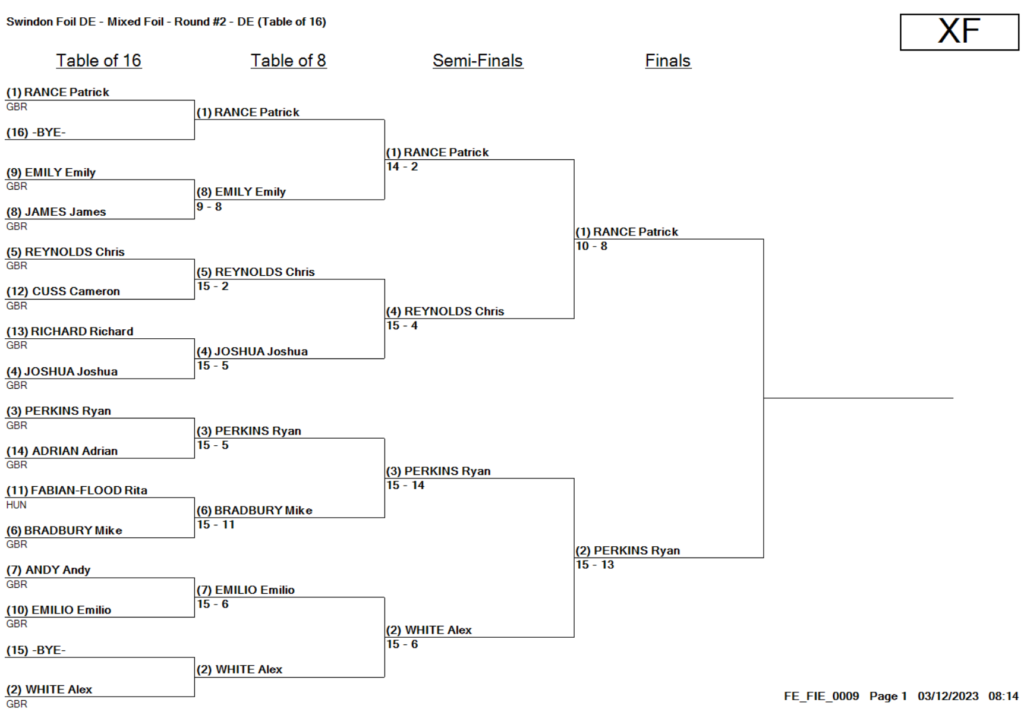
Most competitions won’t have a third/fourth place match and both losing semi-finalists will get a bronze medal or whatever. When the competition is complete a results table can be produced showing the finishing order. For the purpose of illustration I’ve flipped a coin and said that Ryan won the final so that I could show a completed results table:
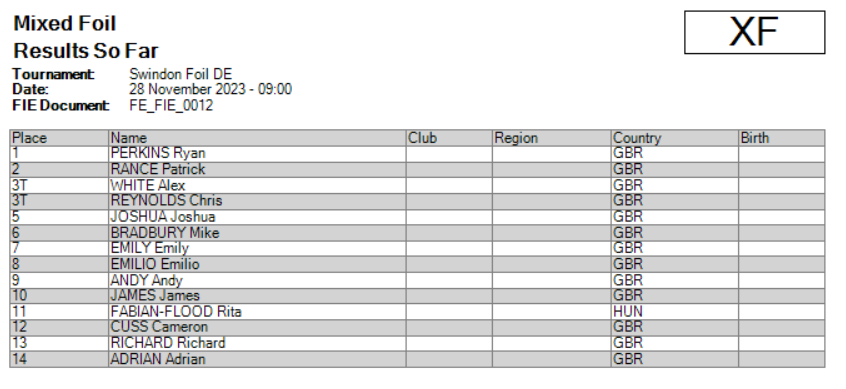
In a ranked competition your final position will affect how many ranking points you receive but understanding that process is a job for another article.